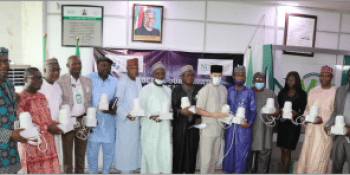New paper finds Nepal’s food security to be at high risk as climate changes

When the monsoon arrives in full strength in Nepal, farmers have a lot to be concerned about. While trying to find shelter, they also have to find ways to protect their crops from the winds and rain. Now, something is changing in the monsoon patterns. Farmers are witnessing heavier and more erratic rainfall during the monsoon period, flooding their rice fields as a result. These extreme weather changes put a lot of stress on farmers' already fragile livelihoods and food security.
The impact that climate change has on national food security in Nepal was recently addressed in a Working Paper published by the CGIAR Research Program on Climate Change, Agriculture and Food Security (CCAFS). The paper “Climate risk and food security in Nepal – analysis of climate impacts on food security and livelihoods” analyses the impacts that climate variability and extremes might have on the Nepalese food and agriculture system.
The authors conclude that when looking at food security indicators such as crop yields, food prices and livestock products, it is clear that these indicators have in fact been influenced by recent climatic trends - threatening food security in the country.
Seasonality of Nepalese food security puts livelihoods at risk
Nepal is a country of extremes. It is divided in three physiographic areas, which slices across the country from east to west. More than half of its population lives in hill and mountain regions, where socioeconomic and agricultural development have both been neglected. Some farmers need weeks to get to the closest city.
The mountainous regions, more specifically the mid and far-western areas, are also particularly sensitive to climate trends as more than 2 million of its inhabitants have been impacted by increasingly erratic rainfall over more than a decade. Rainfall – and the lack of thereof – is one of the key climatic variables affecting Nepalese food production and its agriculture predominantly relies on monsoon rains for irrigation.
In 2008-09, Nepal was hit by the effects from a major drought, which had an impact on more than 3.4 million people. This illustrates the potentially damaging effects that climate variability could have on the country’s food production, access to markets and livelihoods.

With more erratic weather patterns, more Nepalese farmers will have to give up their farms and travel for weeks to the closest market to buy food and fiber.
Photo: T.Miles (Flickr)
During their analysis, the authors discovered that the food security problem was of a regional and seasonal kind. They learned that winters, especially, put pressure on the households who already live in the highly vulnerable area of mid and far-western Nepal. Currently, one household out of three is suffering from poverty and is highly food insecure, the authors conclude.
Throughout the winter months, households are highly dependent on purchased food and contributions. Many spend up to 78 percent of their income on agriculture imports during winter. Results showed that as rainfall becomes even more erratic and declines over the long term, more and more people will be forced to give up their farms and spend even more of their already limited income on food.
Melting glacier tops are also a big threat to crop production and to the families living in these regions.
As part of their study, the authors worked with national experts to identify several recommendations to enhance Nepal’s food security and resilience, and manage climate-related risks.
Highlights of these recommendations include:
(a) adaptation to drought through better water management systems;
(b) capacity building at the government and community levels and
(c) strategies for livelihood and income diversification.
The full list of recommendations can be found in the Working Paper.
Read more about the impact that the climate has on Nepalese food security in the Working Paper "Climate risk and food security in Nepal – analysis of climate impacts on food security and livelihoods", by Krishna Krishnamurthy, Christina Hobbs, Astrid Matthiasen, Siemon Hollema, Richard Choularton, Krishna Pahari, and Mariko Kawabata. CGIAR Research Program on Climate Change, Agriculture and Food Security (CCAFS)
More recent resources related to climate change work in Nepal:
- Time to recognize Nepal's third gender in climate adaptation work;
- How to put climate adaptation into action? Lessons learned from Nepal;
- New toolkit on climate-smart agriculture can help policymakers make better decisions
Marta Millere is currently supporting the Communications Team at CGIAR Research Program on Climate Change, Agriculture and Food Security (CCAFS), but works with communications at Bioversity International.
Story edited by Cecilia Schubert, CCAFS Coordinating Unit.



